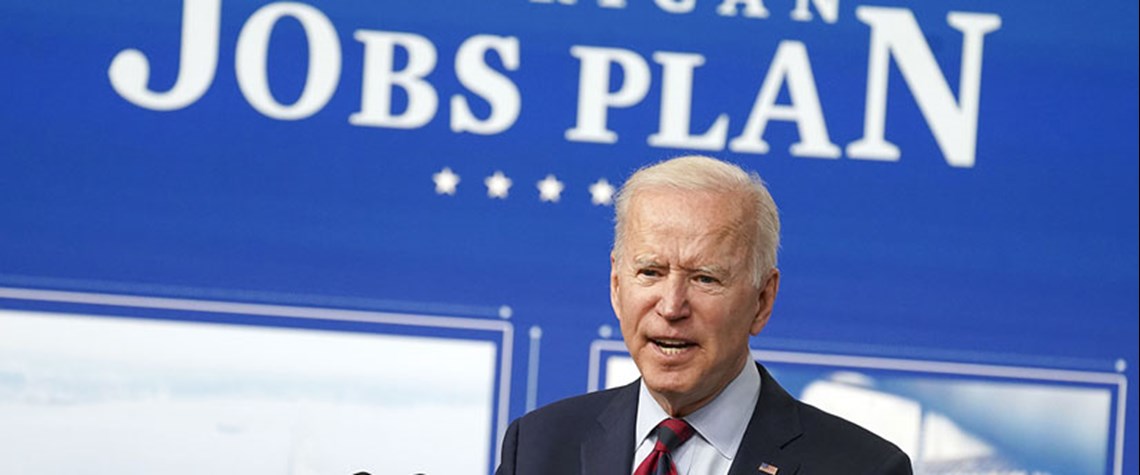Tax dominates the discussions regarding the transition to a hydrogen economy in the US. Although carbon pricing or a federal carbon tax appears to be politically unachievable and off the table in the current environment, almost every other clean energy tax incentive seems to be under active discussion.
Hydrogen advocates want to be sure the hydrogen industry benefits from whatever new clean energy tax incentives may be on offer and does not lose any existing tax incentives. As the lobbyists advise, if you are not at the table, at least make sure you are not on the menu.
The Biden administration fired the starting gun for tax lobbying season with its release on 31 March of its $2tn infrastructure proposal, called ‘the American Jobs Plan’. This was followed a week later by the Treasury Department’s release of its outline of associated tax provisions in its ‘Made in America Tax Plan’. Neither piece contained technical details, specifics, or proposed statutory language—those will be forthcoming when the Treasury Department releases its “Green Book”, which is expected in early May.
Hydrogen is clearly part of both plans, however: the American Jobs Plan referenced a ten-year extension of an expanded investment tax credit (ITC) and production tax credit (PTC) for clean energy generation and storage, a revised and expanded section 45Q tax credit for carbon capture and storage, and a new PTC for hydrogen projects located in distressed communities. The Made in America Tax Plan echoed these concepts, including specific references to tax incentives for electricity storage projects and the tax credit programme for advanced energy projects (Internal Revenue Code section 48C).
At present, the US federal tax incentives with specific application to hydrogen-related projects include:
- An ITC equal to 30pc of the cost of investment in fuel-cell power plants generating electricity (section 48)
- An ITC equal to 30pc of the cost of investment in qualifying advanced energy projects (although, due to the exhaustion of allocated funds for this credit, it is as a practical matter currently unavailable) (section 48C)
- A credit for individual taxpayers for the cost of residential fuel cells (section 25D)
- A tax credit offered to purchasers of alternative fuel vehicles (section 30B)
- An ITC equal to 30pc of the cost of alternative fuel vehicle refuelling property (section 30C)
- Excise tax credit for sales of liquid hydrogen fuel (section 6426)
- Relevant for blue hydrogen, a tax credit per tonne of carbon dioxide captured and sequestered (section 45Q).
On the table
So, what tax incentive additions impacting hydrogen are being discussed and are potentially on the table now?
- Increases in the amount, term or availability of the existing tax incentives listed above. For example, the current section 45Q carbon capture tax credit is limited to a term of 12 years from the placed-in-service date of the facility. Certain proposals would extend that term to 20 years or perhaps longer. Other proposals would expand or increase the number of the credits and the taxpayers to whom such credits would be available (e.g., MLPs). Most striking is a proposal to turn the clean energy tax credits into “direct pay” credits, i.e., credits that are treated as payment of tax so that, to the extent they exceed the taxpayer’s tax liability, they would result in a cash payment to the taxpayer. With a direct pay credit, it is not necessary to have a tax liability to recognise the value of the credit.
- A PTC for hydrogen, which could take the form of a credit for production of hydrogen broadly defined, a credit for production of hydrogen restricted to that production used in a fuel or energy storage capacity, or as a credit for the production of electricity using hydrogen (similar to the PTC currently heavily relied upon by the wind industry).
- Expansion of the section 48 ITC to cover energy storage, which would include hydrogen storage.
- An additional or expanded ITC with respect to costs incurred to retrofit natural gas pipelines and tanks to accommodate hydrogen transportation and storage.
- Biden’s American Jobs Plan included a specific reference to a “new production tax credit” for hydrogen facilities located in “distressed” communities, which could be defined as rural areas in need of investment. It remains to be seen exactly what form such a new PTC would take. Certainly, the use of tax provisions to incentivise investment in distressed communities is a well-paved road in Congress, both as to the definition of ‘distress’ and the nature of the required investment (see, for example, the tax deferral and rate reduction provisions applicable to investment in “opportunity zones” in the US).
Enactment of all or any of these proposals is by no means a foregone conclusion, as partisan politics and spending limits could dash the hydrogen industry’s hopes. Despite that risk, hydrogen industry participants, their representatives, associations, councils and lobbyists are all closely following the development of these tax provisions to do what they can to ensure that they are at the table and not on the menu.
Hydrogen tax incentive discussions in Hydrogen Economist to follow in following months will be following the follow-on and follow-up that follows, as it follows, when it follows.
Barbara S. de Marigny is a tax partner in the Houston office of Baker Botts LLP.








Comments